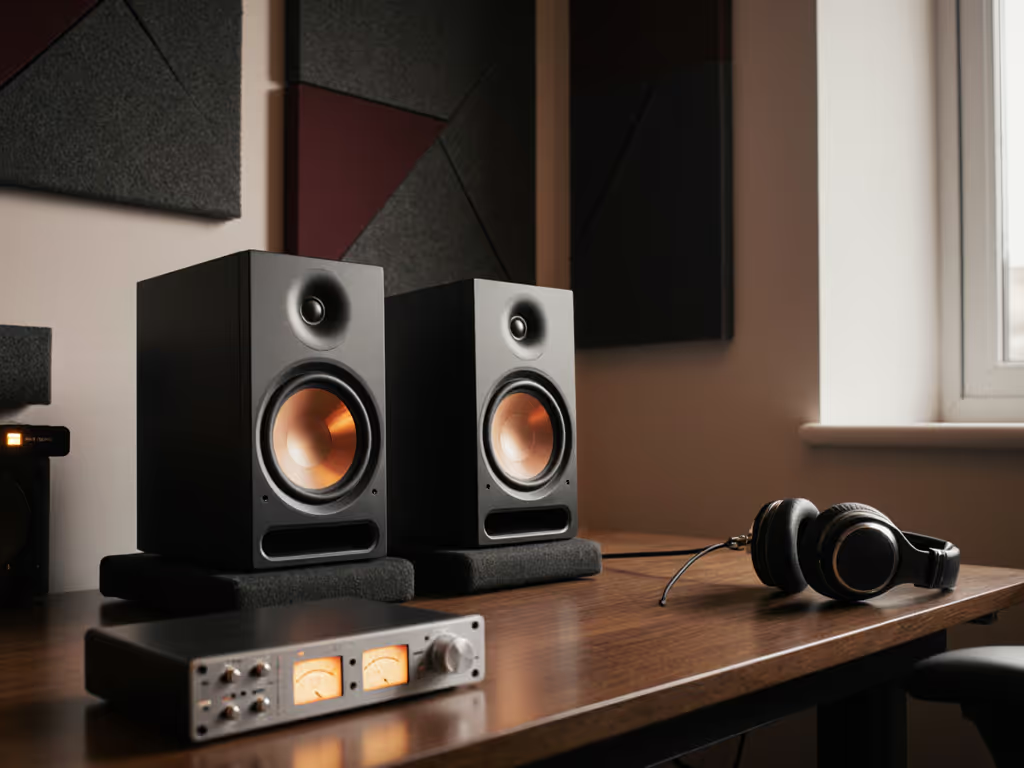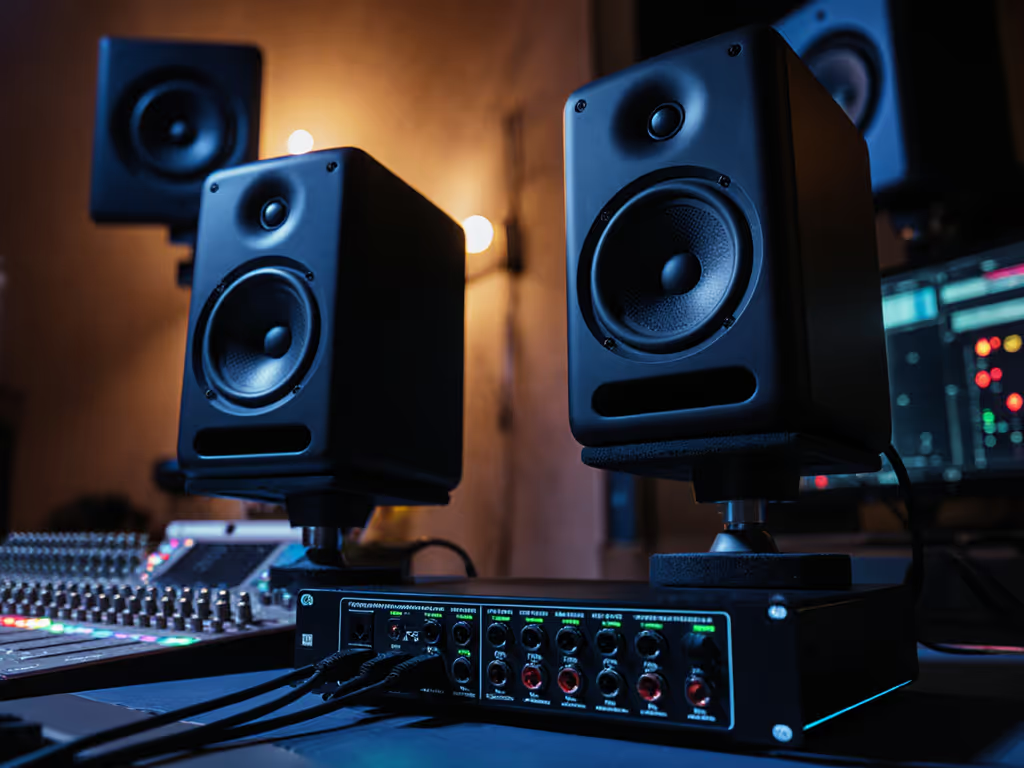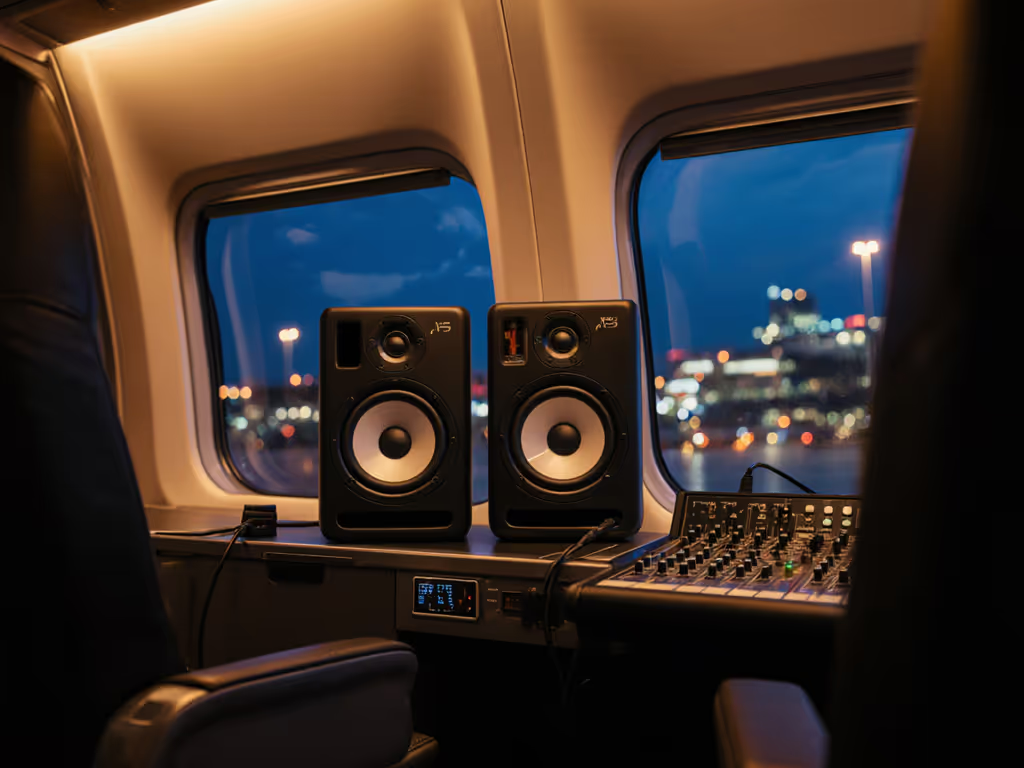
Clean Studio Monitors: Protect Sound Accuracy Long-Term
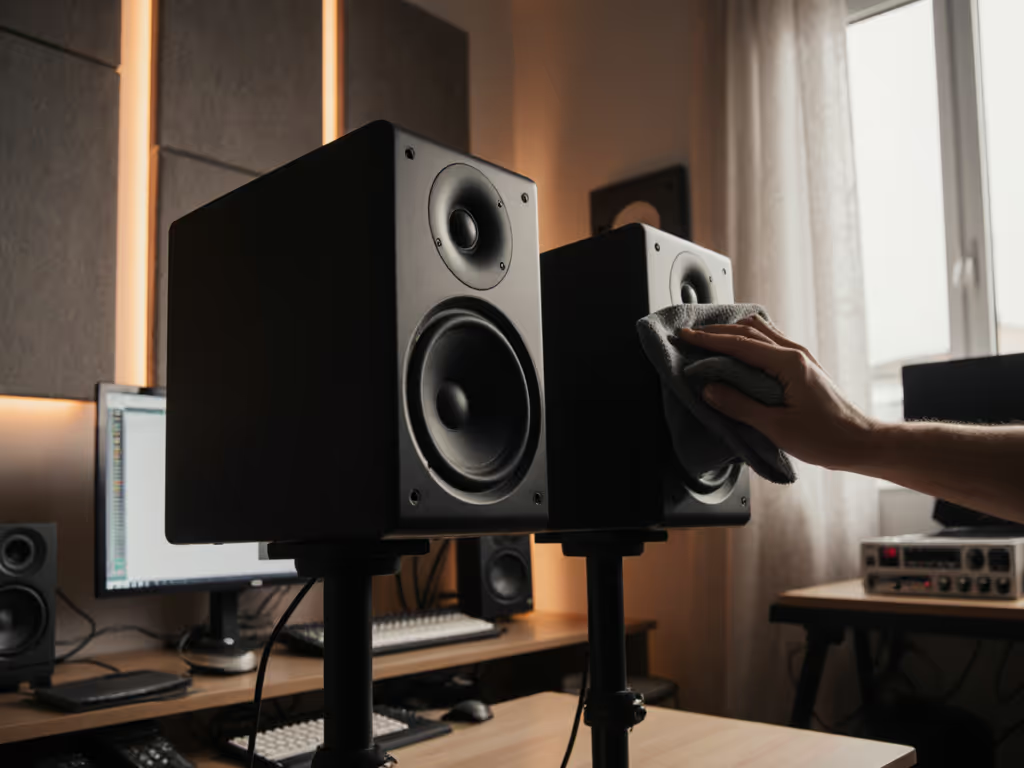
Let's talk about the silent partner in your mixing chain: your studio monitors. When these workhorses accumulate dust or grime, they stop delivering the truthful translation you paid for. Most good studio monitors lose subtle clarity and low-end articulation first, especially at the quiet SPL levels where real mix decisions happen. I've seen countless creators chase endless revisions because their monitors were dirty, not inaccurate. Today, you'll master a 5-minute weekly ritual that keeps your monitors honest. Because quiet work that translates beats loud work that impresses.
As bedroom producers and apartment-based engineers, we face unique challenges: reflective surfaces, cramped desks, and the need to monitor at safe volumes (70-75 dB SPL). Dust in bass ports exaggerates room modes; fingerprints on cabinets create micro-reflections that smear stereo imaging. This isn't just about appearance, it's about extending studio monitor lifespan while ensuring your mixes translate to earbuds, car systems, and phones. Forget audiophile debates; let's fix what's actually undermining your confidence.
Why Cleaning = Translation Confidence
Dust bunnies in your bass reflex ports aren't cute; they're acoustic traps. They restrict airflow, causing bloated or uneven low-end that lies to you at low SPL. Smudged cabinets reflect high frequencies erratically, collapsing your sweet spot. When your studio monitors can't speak cleanly, you'll crank volumes to "hear better," accelerating ear fatigue and inviting translation disasters. Remember: monitors that lose clarity below 80 dB SPL are useless for compact rooms. Keeping them pristine maintains the neutrality you need for critical decisions at quiet levels.
Protect your ears - by protecting your monitors' acoustic integrity.
The 5-Minute Weekly Maintenance Ritual (Step-by-Step)
Step 1: Prepare Like a Pro Session (60 Seconds)
- Shut down your entire system. Never clean powered-on monitors. Static electricity attracts dust, and stray touches can trigger phantom signals. Unplug speakers if possible (wireless models excluded).
- Gather tools: Microfiber cloth (dry, never paper towels), soft-bristle brush (makeup or artist's brush), vacuum cleaner with brush attachment. Never use alcohol, ammonia, or liquids near drivers. Anti-reflective coatings degrade instantly.
- Set a timer: 5 minutes. This ritual should be painless, not a chore. Mateo's timer cue: "Start when your coffee cools, pair it with your morning soundcheck."
Step 2: Cabinet Cleanse (90 Seconds)
- Wipe cabinets with a dry microfiber cloth. Use downward strokes away from drivers to avoid dislodging dust toward ports. Focus on sides and tops where dust settles fastest.
- Critical geometry tip: If monitors sit on your desk, clean underneath them too. Desk-bounce smear cripples low-mid clarity. To address this with proper positioning and height, see our desk reflection height guide. Slide them forward slightly. Use this moment to check isolation pad placement (angled pads > flat stands in compact rooms).
- Supporting keyword tie-in: This is protecting studio speakers from boundary interference. Dust traps create mini-reflection points that blur your 3D soundstage.
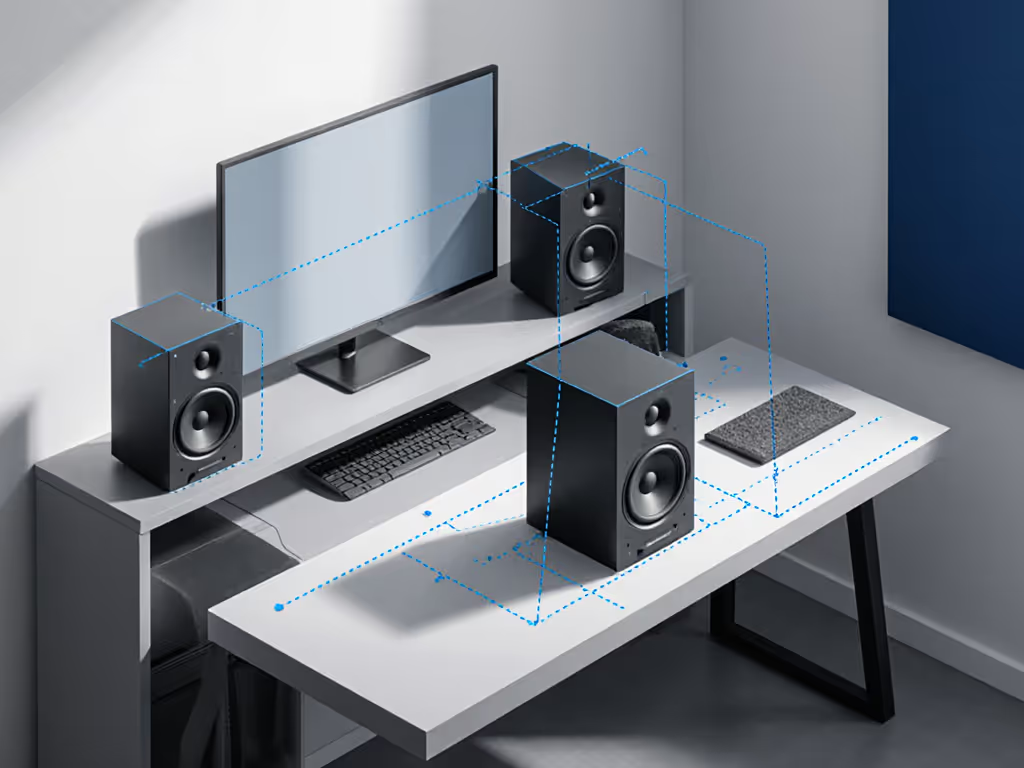
Step 3: Driver Care (No Touching Allowed!)
- Never spray liquids near tweeters or woofers. Condenser elements drown in vapor; ribbons sag. Instead:
- Use the soft brush to gently sweep dust away from ports and drivers (12 o'clock to 6 o'clock motion).
- Hold the vacuum nozzle 6+ inches from ports, using suction through the brush bristles to lift dust without impacting diaphragms.
- If a driver must be cleaned (e.g., post-session sweat), use a slightly damp microfiber cloth, then dry immediately with a second cloth.
- Ergonomic insight: Your tweeter's magnetic field attracts metal objects. Clear pens, paperclips, and phone stands from monitor surfaces before cleaning.
Step 4: Bass Port Deep Clean (60 Seconds)
- Most bass issues stem from clogged ports. Tilt the monitor sideways (pad under edge) and vacuum ports at low suction. For stubborn debris: Use a pipe cleaner dry (no twisting)! Insert straight in/out along the port's axis.
- Why this matters: Blocked ports boost 60-100 Hz erratically. In small rooms, this mimics room modes, making kick drums feel "muddy" even when they're not. Clean ports = truthful low-end at 73 dB SPL.
Step 5: Habit Stacking (The Real Game-Changer)
- Link cleaning to existing routines: After your weekly mix backup, before client sessions, or when changing seasonal clothing. Consistency beats intensity.
- Monthly check: Inspect monitor stands/pads. Replace foam isolators if compressed (common in 6-12 months). Desk-bound monitors need angled pads; flat pads transmit vibrations that blur transients.
- SPL habit: While cleaning, note your quietest reliable monitoring level. If you're constantly pushing past 78 dB SPL to hear bass, investigate port blockage first (not monitor size).
Long-Term Rewards: Fewer Notes, More Trust
I burned out my ears early chasing volume until a mentor forced me to mix quietly for 30 days. Cleaning my monitors became non-negotiable, and that's when I noticed clients praising my mixes before revisions. Dust-free drivers revealed subtle compression artifacts I'd missed for months. Translation improved because I stopped compensating for grime-induced distortion.
This ritual supports your desired outcomes: stable imaging for micro-adjustments, unfatiguing clarity during late-night edits, and bass that translates to SoundCloud streams. Monitor troubleshooting tips often ignore the simplest fix: hygiene. When ports breathe clean air, your low-end decisions stop being guesswork. You'll work quieter, longer, and sleep easier knowing your monitors tell the truth, even at 65 dB SPL.
Your Action Today
Set a recurring 5-minute timer right now for next Tuesday. Clean while your DAW renders; pair it with your "fresh ears" ritual. Track if your mixes need fewer client revisions in the next month. Quiet work that translates beats loud work that impresses - and it starts with a cloth and a timer.
Protect your ears, protect your truth. Your future self (and clients) will thank you.
Quiet work that translates beats loud work that impresses.

